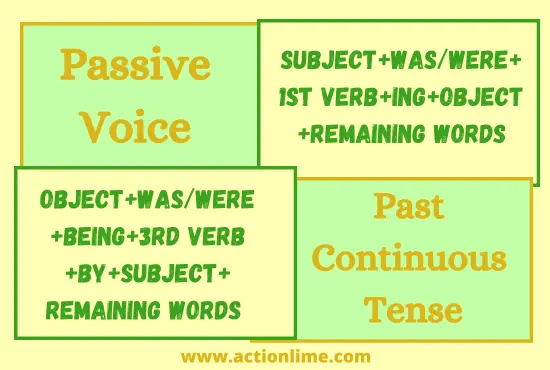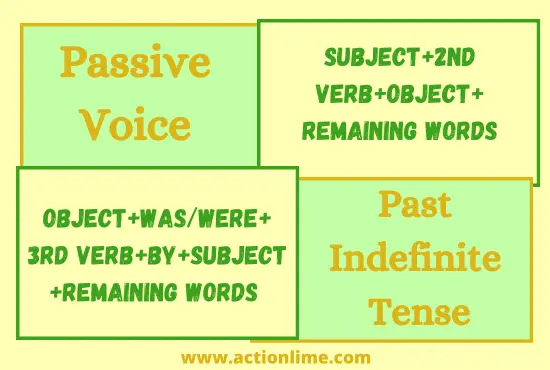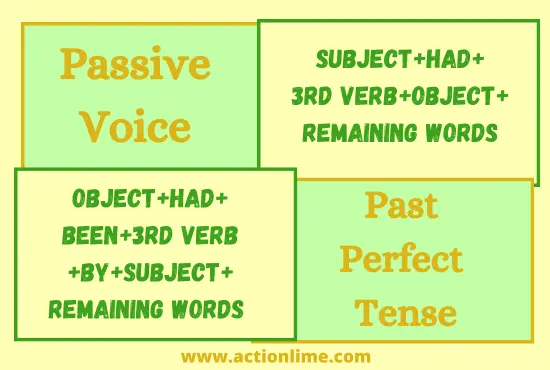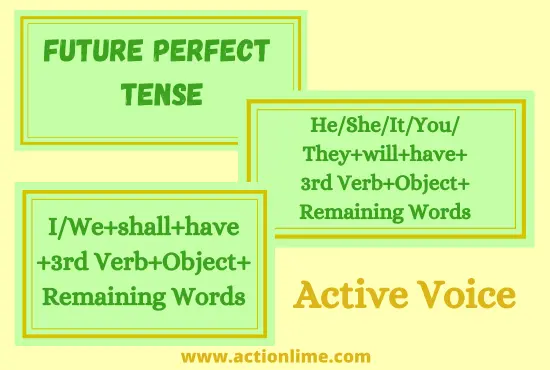Past Continuous Tense| Use, Rules, Formula, Examples
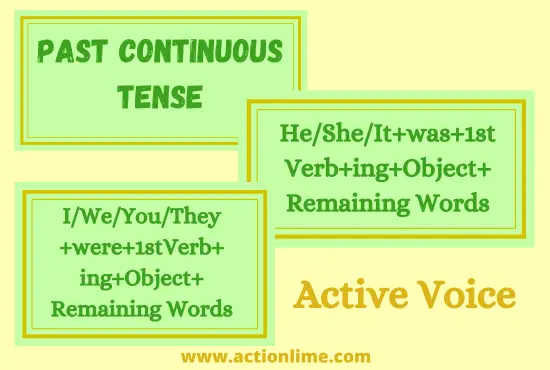
Past Continuous Tense or Past Progressive Tense can be defined as that type of past tense in which Verb is used to indicate the continuous or progressing actions of the past time. Thus, actions that had been started during past time, and are still not completed, but going on during past time can be expressed in Past Continuous Tense or Past Progressing Tense.
Rules to form Past Continuous Tense Sentences
To construct the Sentences in Past Continuous Tense, follow the following rules.
- First, write the Subject of the past time progressing action.
- Then write the helping verb “was/were” with the respective Singular & Plural Number Nouns and Pronouns.
- Then, write the 1st Verb with the addition of “ing” to it, to show that the action was in the progressing stage.
- Then, write the Object on which the Subject continued some action.
- Then write the remaining words if there are any.
Helping Verbs of Past Continuous Tense
Past Continuous Tense uses the following 2 helping verbs to indicate the past time progressing or continuous actions.
“Was” As a Helping Verb in the Past Continuous Tense
“Was” is used as a helping verb in Past Continuous Tense Sentences with Singular Number Nouns and Pronouns(I, He, She, It), to indicate the progressing/continuous actions of the past time. Thus, Past Continuous Tense Sentences with “was” as a helping verb have the following Sentence Structural formula.
I/He/She/It/Singular Nouns+was+1st Verb+ing+Object+Remaining Words

“Were” As a Helping Verb in the Past Continuous Tense
“Were” is used as a helping verb in Past Continuous Tense with Plural Number Nouns and Pronouns(We, You, They), to indicate the progressive/continuous actions of the past time. Thus, Past Continuous Tense Sentences with “were” as a helping verb, have the following Sentence Structural formula.
We/You/They/Plural Nouns+were+1st Verb+ing+Object+Remaining Words

Sentence Structure of Past Continuous Tense
Assertive, Negative, Interrogative, and Negative-Interrogative Sentences of Past Continuous Tense have the following Sentence Structural formula.
Assertive Sentence Structure of Past Continuous Tense
Assertive Sentences of Past Continuous Tense take “was/were” as helping verbs with 1st Verb and the addition of “ing” to the 1st Verb, to indicate the past time progressive/continuous actions. Thus, Assertive Sentences of Past Continuous Tense have the following Sentence Structural formula.
I/We/You/They/He/She/It/Singular & Plural Nouns+was/were+1st Verb+ing+Object+Remaining Words
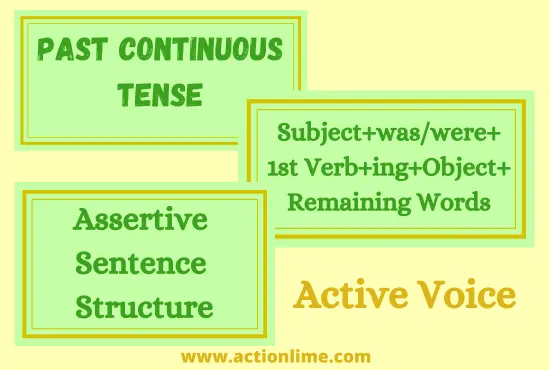
Examples of Assertive Sentence Structure of Past Continuous Tense
Following are some examples of Assertive Sentences of Past Continuous Tense.
- I was reading a book when I called her.
- We were playing soccer in the park all afternoon.
- You were cooking dinner while she was setting the table.
- They were studying for their exams at midnight last night.
- He was walking to school when it started to rain.
- She was watching TV when the power went out.
- The dog was barking loudly during the night.
- She was working on her project when the phone rang.
- They were discussing the new plan at the meeting yesterday.
- I was thinking about you when you sent me a message.
Negative Sentence Structure of Past Continuous Tense
Negative Sentences of Past Continuous Tense uses “not” with helping verbs “was/were”, to indicate the negative progressing actions of the past time. Thus, Negative Sentences of Past Continuous Tense have the following Sentence Structural formula.
I/We/You/They/He/She/It/Singular & Plural Nouns+was/were+not+1st Verb+ing+Object+Remaining Words

Examples of Negative Sentence Structure of Past Continuous Tense
Following are some examples of Negative Sentences of Past Continuous Tense.
- I was not listening to music when the doorbell rang.
- We were not taking notes during the lecture.
- You were not waiting for the bus when it suddenly started to snow.
- They were not driving home when he saw the accident.
- He was not playing video games when his mom called him for dinner.
- She was not feeling sick, so she decided to stay home.
- The sun was not setting as we arrived at the beach.
- The birds were not chirping early in the morning.
- We were not planning a surprise party for her birthday.
- The children were not building a sandcastle by the shore.
Interrogative Sentence Structure of Past Continuous Tense
Interrogative Sentences of Past Continuous Tense take helping verbs “was/were” at the start of Sentences to indicate the interrogative/questionable nature of past time progressing/continuous actions. Thus, Interrogative Sentences of Past Continuous Tense have the following Sentence Structural formula.
Was/were+I/We/You/They/He/She/It/Singular & Plural Nouns+1st Verb+ing+Object+Remaining Words+?
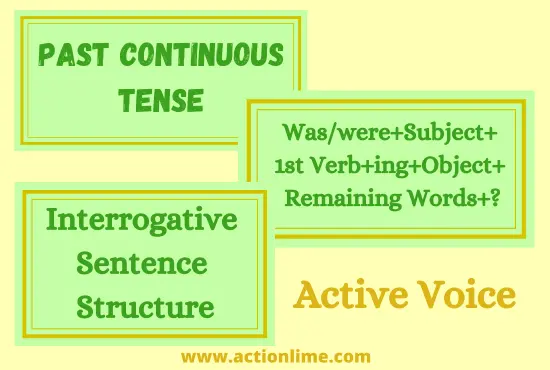
Examples of Interrogative Sentence Structure of Past Continuous Tense
Following are some examples of Interrogative Sentences of Past Continuous Tense.
- Was I jogging in the park when it started to rain?
- Were we fixing the car while we were waiting in the garage?
- Were you knitting a sweater when the phone rang?
- Were they playing in the backyard when I arrived?
- Was he painting the fence all morning?
- Was she discussing the project details when the power went out?
- Was the cat sleeping on the couch when I came home?
- Were they studying together at the library yesterday evening?
- Was she singing her favorite song while cooking dinner?
- Were the neighbors arguing loudly last night?
Negative-Interrogative Sentence Structure of Past Continuous Tense
Negative-Interrogative Sentences of Past Continuous Tense takes “was/were” at the start of Sentences, to indicate the interrogative/questionable nature of the past progressive action. And “not” comes after the Subject of the sentence to show the negative nature of Past Progressive/continuous action. Thus, Negative-Interrogative Sentences of Past Continuous Tense have the following Sentence Structural formula.
Was/were+I/We/You/They/He/She/It/Singular & Plural Nouns+1st Verb+ing+Object+Remaining Words+?

Examples of Negative-Interrogative Sentence Structure of Past Continuous Tense
Following are some examples of Negative-Interrogative Sentences of Past Continuous Tense.
- Was I not writing a letter when the electricity went off?
- Were we not explaining the lesson while the students were taking notes?
- Were you not trying to fix the computer when it suddenly crashed?
- Were they not having a barbecue in the backyard when their friends arrived?
- Was he not painting the living room when her kids were playing nearby?
- Was she not exploring the city when we found a charming little cafe?
- Was the dog not running around the yard while the children were playing?
- Was I not reading a novel when I noticed it was getting late?
- Was he not watching TV when he heard a strange noise outside?
- Were they not dancing at the party when the music suddenly stopped?
Past Continuous Tense-Passive Voice
Past Continuous Tense Sentences can easily be convertible to Passive Voice form, just by following the rules mentioned in the article:
